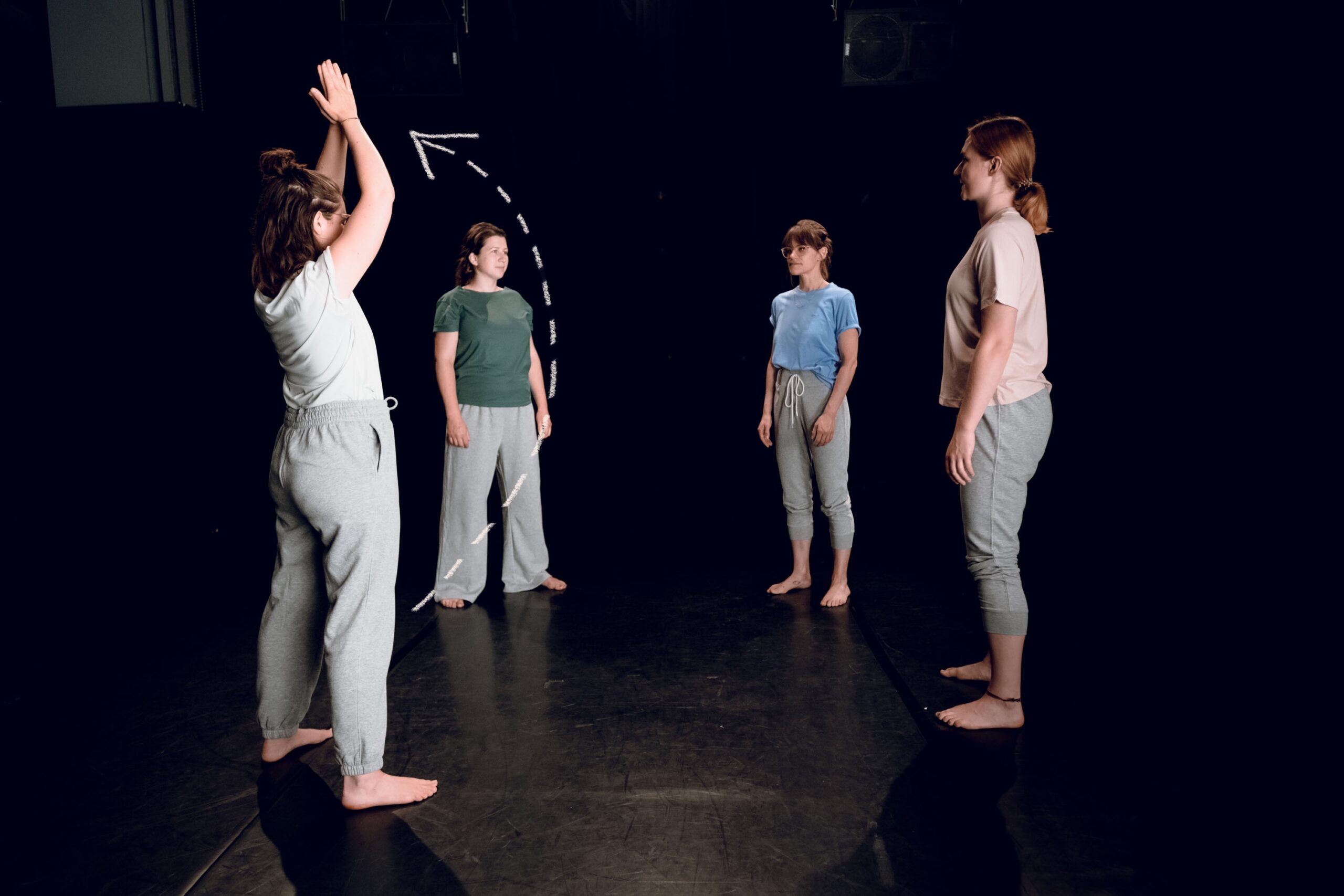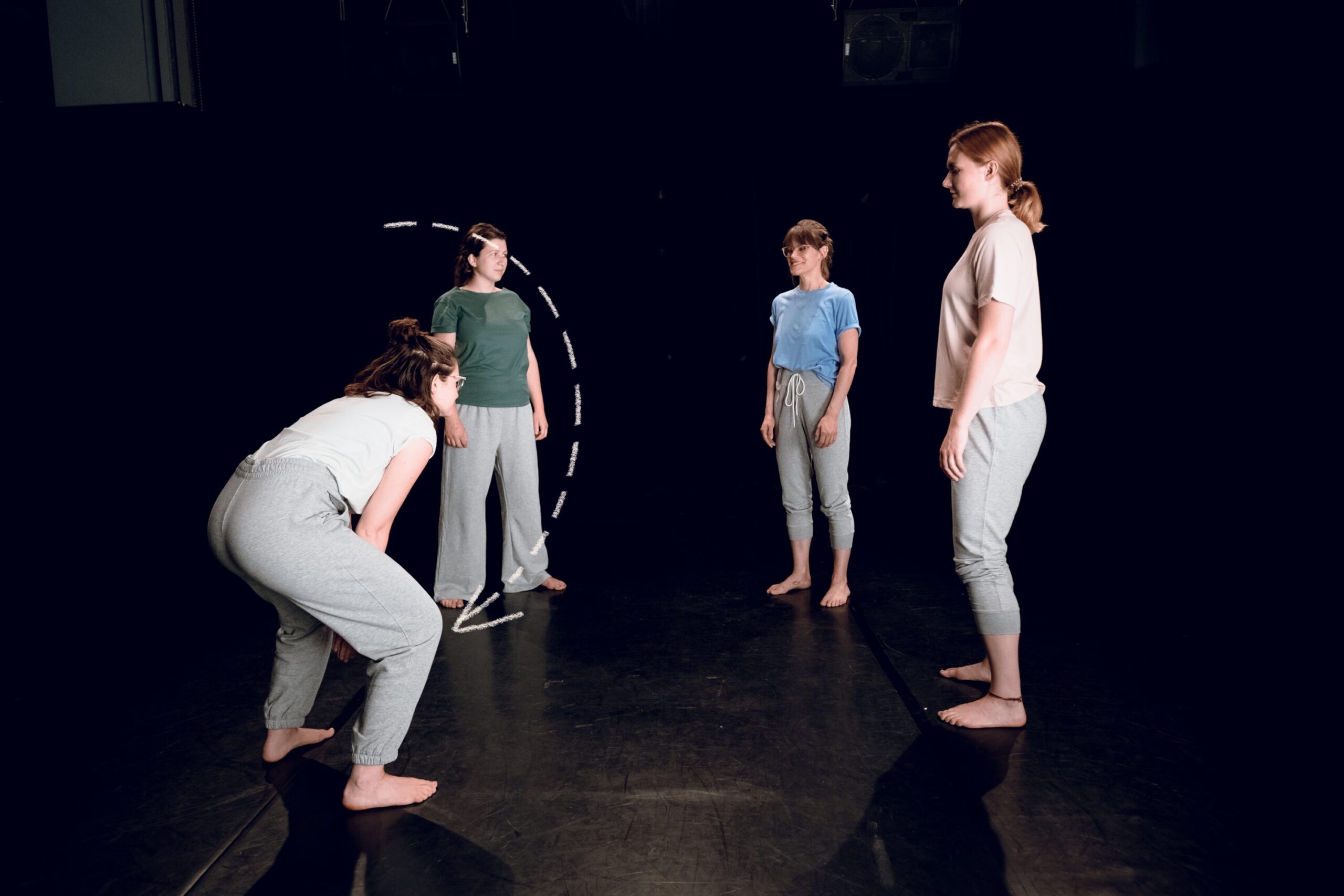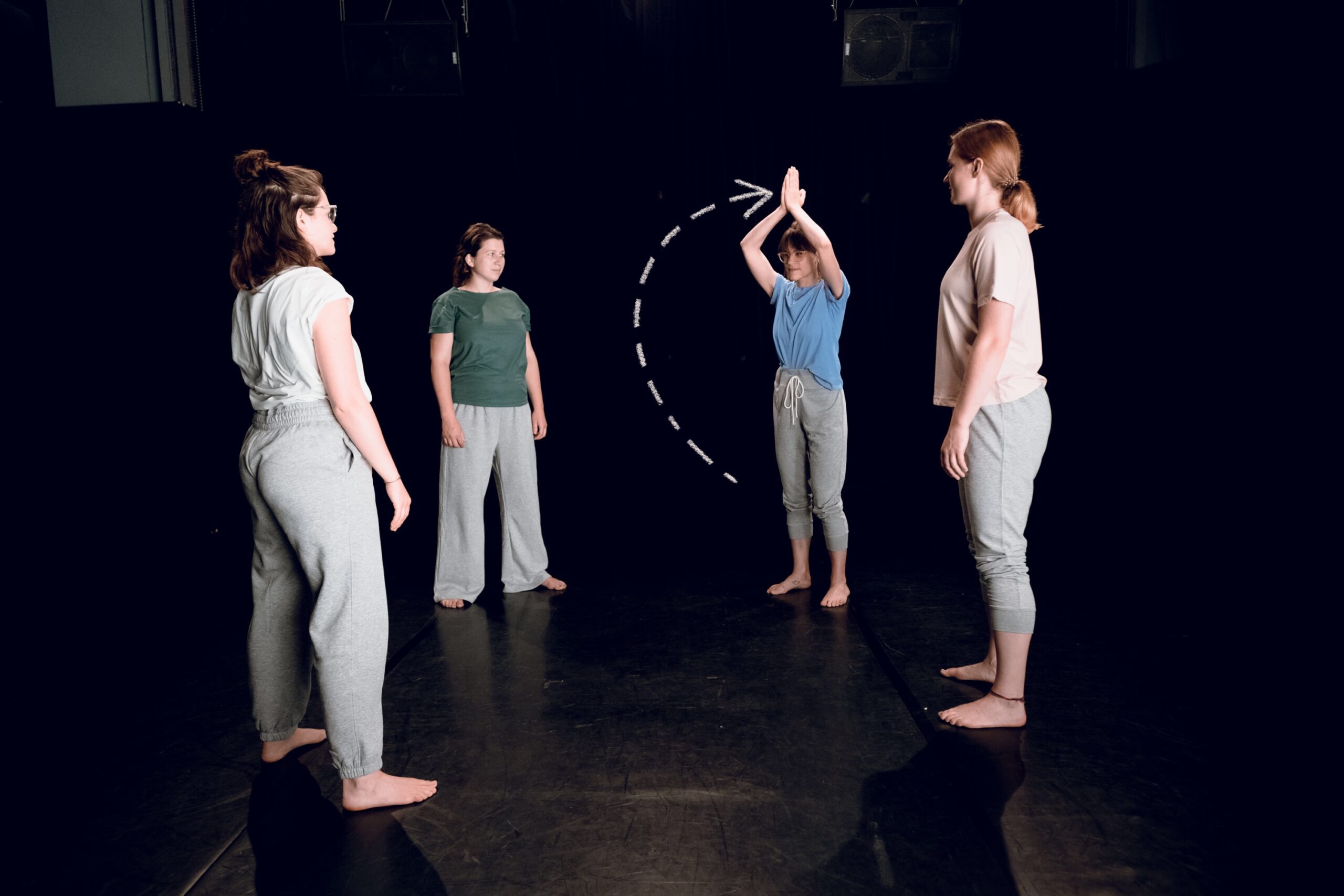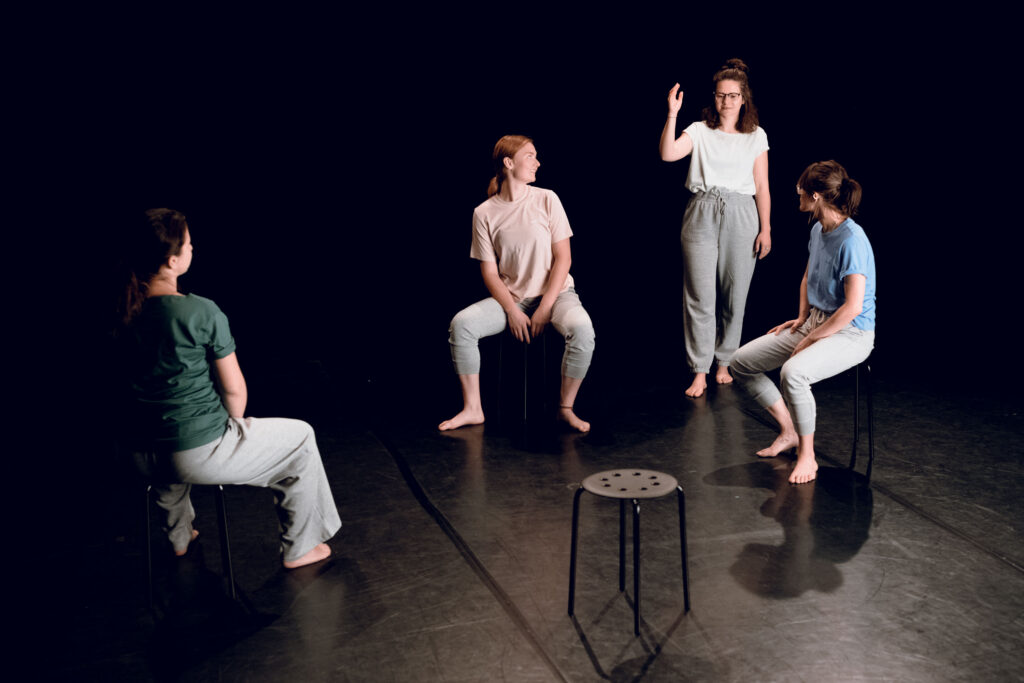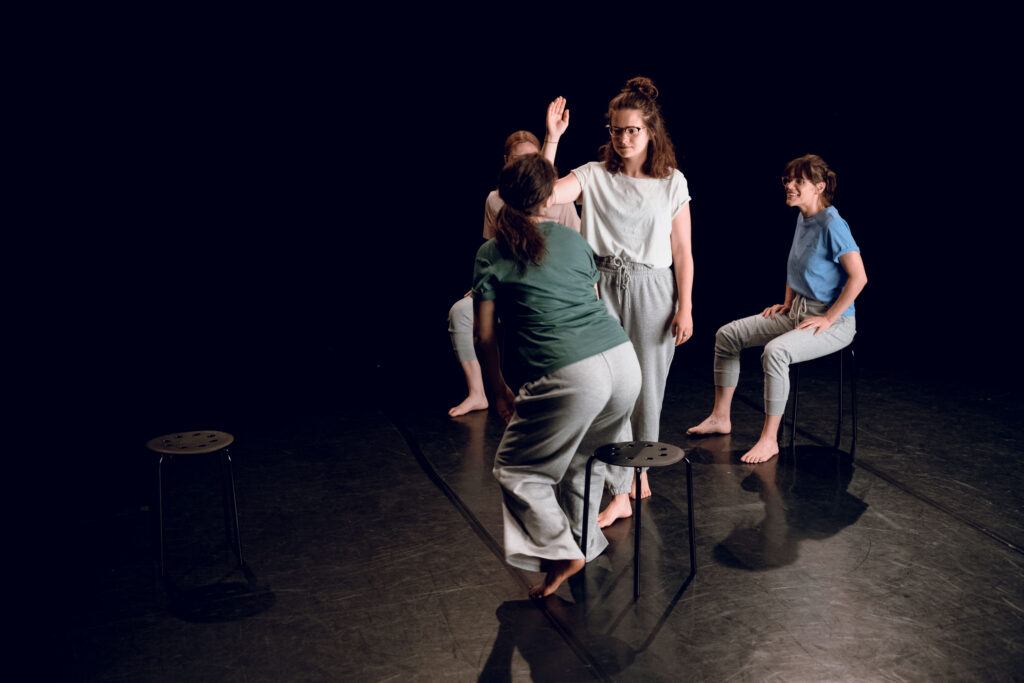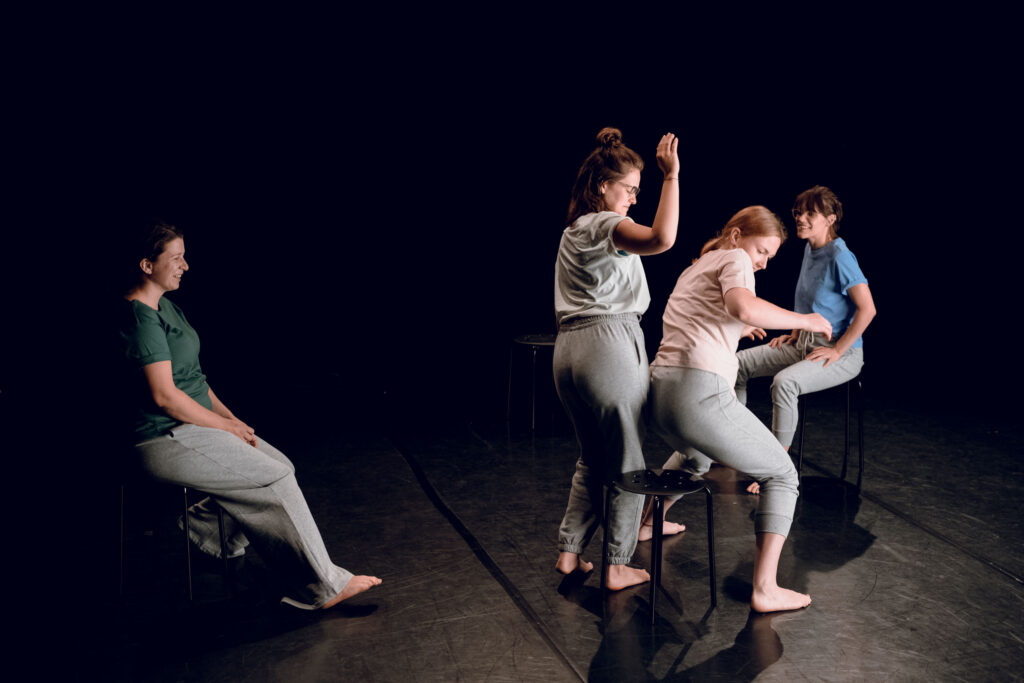1. Throw the ball, throw your name: One person in the circle has an imaginary ball. It can be like a tennis ball. He/she should be very specific about the size and the type of the ball. The person with the ball throws it to someone else across the circle. It is essential to make eye contact with the chosen person before throwing the imaginary ball to him/her. The other person catches it and chooses another person and so on. It is important not to catch the ball before it arrives. After players throw the ball they should relax their arm, so it should be obvious that they are not holding it anymore.

What we are exploring:
- Moments of giving and receiving
Once everybody understands the rule of throwing the ball, we add our names. So, we are throwing our names together with the ball. Same rules. Make eye contact and be specific about the moments of giving and receiving. While playing, we are also learning each other’s name.
First, we “throw” our own name when we throw the ball. Later, when we are more familiar with each other’s names, we throw the name of the person we choose. Imagine that our voice is a ball. We are throwing our voices across the circle! Also, our voice needs to be as strong as the throwing movement so that it can reach a distant partner across the circle. As the game proceeds we can speed up. Remind the group that as we add new elements to the exercise, they still need to keep the previous quality that was practised.
What we are exploring:
- Memory
- Sound of our voices
- Precision of our movements
- Awareness of any single moment
- Keeping up with many assignments at the same time
2. Clapping: Form a circle having equal distances between each person. Turn to one side with a clap and send the clap to the person next to you. You must create eye contact when doing that. Your neighbour receives the clap keeping the eye contact and sends it to the next one in the same direction. Nobody talks! In this way, the clap travels around the circle. You should emphasize that we want to reach the point at which the rhythm of the claps and the level of the sound are equal in the circle. This takes a bit of time. Once you achieve this, you can challenge players to change the direction of clapping: “Now we can hear that the rhythm is equal. As a next step you will change the direction.” Then you challenge anyone from the group to change the direction. After this point the direction can be changed by anyone at any time.
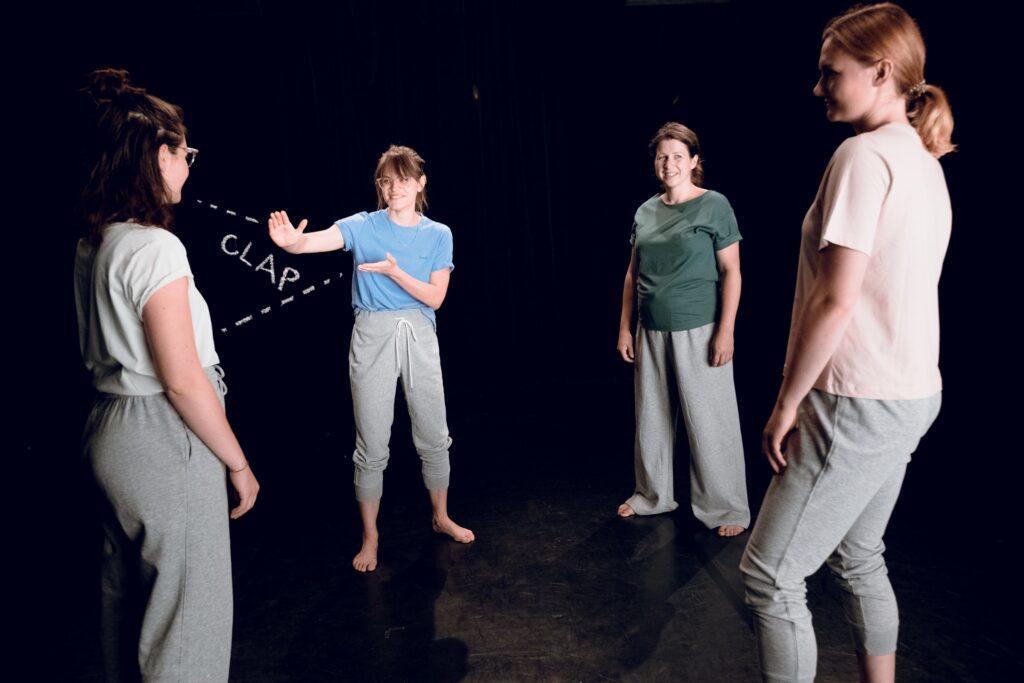
What we are exploring:
- Listening as a tool of communication
- Awareness of any single moment
- Clapping as the only way of communication
3. Samurai game: One of the participants in the circle becomes a samurai. This person holds an imaginary sword with both hands above his/her head. Then he/she chooses another person in the circle and “attacks” by moving only his/her hands (with the imaginary sword) top down and shouts: HO! The one who is attacked brings his/her imaginary sword above his/her head to defend himself/herself and says loudly: KAI! Then two people standing at two sides of the attacked member also attack him/her with their imaginary swords by “cutting him/her in half” and shouting: DO! Then the attacked person becomes the next samurai, lifts both arms above his/her head and chooses another target to attack across the circle.
What we are exploring:
- Awareness of any single moment
- Ongoing process of giving and receiving
- Connection between voice and body
4. Tribe: One of the participants in the circle becomes a tribal chief. He/she should take a step ahead and make a very short speech in a made-up language. The others in the circle become the tribe members and one by one repeat the leader’s speech, also using his/her gestures accompanying the speech. The speech and the gestures should be as precise as possible. To make the others comfortable, you can go first. Each tribe member repeats your speech. Then the person next to you becomes the leader and again everybody repeats one by one. It goes around in the circle in this way. Stress that all members should repeat all elements as precisely as possible including the rhythm, atmosphere, etc. Go as many times as needed in the circle until you see that there is a significant improvement in the quality of speeches, level of voices, and combination with movements.
What we are exploring:
- Combination of movement and voice
- Trusting our own creativity
- Respecting other people’s expressions
- Importance of quality
- Ability to do many tasks at the same time
- Listening and observing
- Learning from each other
5. The Queen: Spread the chairs around the room. The number of chairs should be equal to the number of participants. One person will play the Queen and the others will be her subjects. The Queen is standing while the others are seated. She aims to get a seat, but she is allowed to move only very slowly while doing a waving gesture. Other seated members constantly change their chairs very quickly and try to keep the Queen standing. So, when the Queen approaches an empty chair, one of the subjects goes there and occupies it. The subjects try to surprise the Queen as much as possible. They do it until the Queen succeeds in reaching an empty chair. Then the person who could not manage to occupy the chair becomes the next Queen.
What we are exploring:
- Awareness of any single moment
- Communication without using words
- A perfect example of what you mean by the term “obstacle” (i.e. the Queen is not allowed to move quickly)
Extreme listening and embracing the obstacle
I think of “extreme listening” as the major condition to enter the world of creation, and “embracing the obstacle” as the key for translating the world around you into a theatrical language.
To give you concrete examples, I will point to the presence of “obstacles” in games and exercises that will be described.
